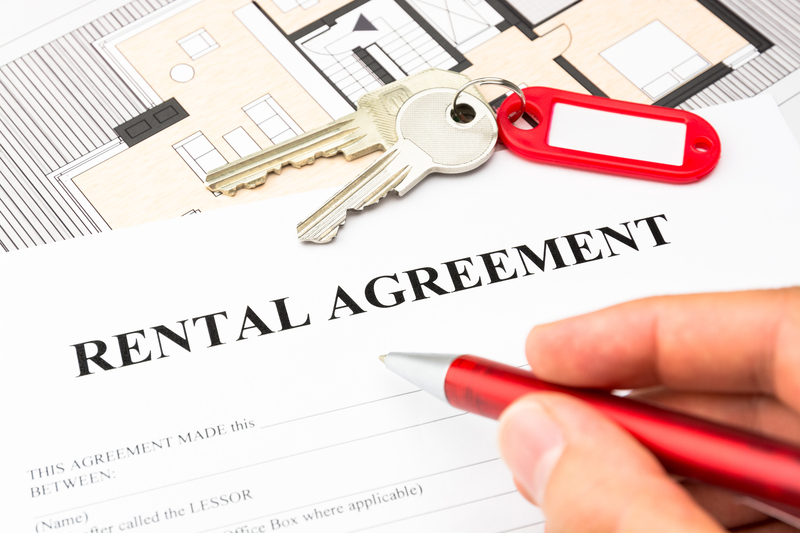Strategies for Safe Piano Moving: Leave it to the Pros
Posted on 07/06/2025
Strategies for Safe Piano Moving: Leave it to the Pros
Moving a piano is far from a standard moving job. Whether you own a precious family heirloom upright or a grand concert instrument, handling your piano with care is critical to safeguard its value, functionality, and sentimental worth. In this comprehensive guide, we'll explore professional strategies for safe piano moving, why you should hire experienced piano movers, and what steps to take before, during, and after your move. If you've been thinking about relocating your piano yourself, read on to discover why the safest route is to leave it to the pros.
Why Safe Piano Moving Is a Unique Challenge
Pianos are more than just heavy objects; they are intricate musical instruments with thousands of moving parts. Here are some of the reasons why safe piano moving demands special attention:
- Size and Weight: Many pianos weigh between 400-1,200 pounds. Grand pianos can be especially unwieldy due to their length and delicacy.
- Delicate Components: The inner workings, including strings, hammers, and soundboard, are highly sensitive to vibrations, jolts, and environmental changes.
- Unbalanced Weight Distribution: Pianos are often heavier on one side, making them tricky to handle without specialized knowledge.
- Risk of Property Damage: Improper moves can cause costly damage to floors, walls, doors, or stairs, and could even lead to injury.

Professional Piano Movers: The Safest Choice
When it comes to safe piano moving, relying on expert piano movers offers invaluable peace of mind. Here's why leaving your piano move to professionals is the smartest strategy:
- Expertise: Professional piano movers undergo specialized training to master the precise balancing and disassembly required for different types of pianos.
- Proper Equipment: Using piano dollies, skid boards, pads, and straps, pros ensure the instrument is supported and protected throughout the move.
- Insurance Protection: Reputable piano moving companies provide insurance coverage, reducing the risk of financial loss from unforeseen accidents.
- Efficiency: Professionals work faster and more safely, minimizing interruption and stress.
Essential Strategies for Safe Piano Moving
Should you decide to partner with expert piano movers, understanding their strategies can help you prepare properly and recognize high-quality service. Here are the most critical safe piano moving tactics:
1. Pre-Move Assessment and Planning
Every safe piano move starts with thorough preparation. Professionals conduct a detailed walkthrough of both current and new locations, taking precise measurements and identifying potential hazards such as tight staircases, narrow hallways, or uneven flooring.
- Measuring Doorways and Pathways: Avoiding bottlenecks and ensuring clearances prevent last-minute surprises.
- Staircase and Elevator Access: Noting the number of stairs, turns, and available elevator dimensions informs the moving strategy.
- Prepping the Environment: Removing rugs, door stoppers, and any obstacles ensures a smooth transit route.
2. Using Specialized Piano Moving Equipment
Safe piano relocation is virtually impossible without the right tools. Professional piano movers use industry-grade equipment, including:
- Piano Dollies and Skid Boards: Allow for stable, controlled movement and make it possible to glide a piano over floors without damage.
- Secure Straps and Blankets: Protect the piano's exterior and internal mechanics from bumps, scratches, and weather exposure.
- Ramps: Assist in loading and unloading at challenging elevation changes.
- Custom Crating: Particularly for grand pianos, custom crates may be constructed to shield the instrument during long-distance or international moves.
3. Proper Lifting and Handling Techniques
Professional movers rely on teamwork and safe lifting strategies, which include:
- Lifting from the Base: Never from the legs or pedals, which are vulnerable to breaking.
- Using Multiple Personnel: Larger pianos require a coordinated team effort for secure handling, especially on stairs or through doorways.
- Maintaining Upright Positions: Upright pianos should be kept vertical, and grand pianos placed on their sides only when necessary, always with proper support.
4. Disassembly and Reassembly
Particularly for grand and baby grand pianos, parts such as the legs, pedals, and lyre are commonly removed to prevent breakage. Strategic disassembly facilitates safer transport and easier navigation through tight passages.
- Labeling Hardware: Ensures every screw, bolt, or piece is reinstalled correctly at the new location.
- Wrapping Detached Parts: Padding and labeling keep all pieces together and protected.
5. Transportation and Environmental Considerations
A dedicated moving truck is essential for safe piano transportation. Professional companies use vehicles with climate control options and advanced suspension systems to reduce jolts and protect your instrument from temperature and humidity fluctuations.
- Padding and Securing: The piano is immobilized within the truck to prevent shifting and impact.
- Weather Precautions: Movers plan for rain, snow, or heat, ensuring the piano isn't exposed to harmful elements during loading or unloading.
6. Post-Move Tuning and Inspection
Even under ideal conditions, a piano may go out of tune after being moved due to vibrations and changes in environment. Reputable piano movers often recommend allowing your piano to "settle" for several days before a professional tuner checks and corrects the pitch.
- Visual Inspection: Ensure all keys, pedals, and body parts are intact.
- Climate Stabilization: Give the piano time to acclimate before regular use or tuning.
The Hidden Dangers of DIY Piano Moving
The internet is awash with stories of people injuring themselves or damaging their pianos--and their homes--while attempting to move a piano without help. Here's what can go wrong when you don't leave piano moving to the pros:
- Personal Injury: Strained backs, crushed fingers, and even broken bones are all-too-common with inexperienced handling of heavy instruments.
- Irreparable Damage: The risk of chipped veneer, snapped strings, or cracked soundboards can be devastating--and expensive to fix.
- Property Damage: Scratched floors, gouged walls, or broken stair balusters may leave you with major repair bills.
- No Insurance: Homeowners' insurance rarely covers DIY move mishaps, while professionals carry liability and cargo protection for your piano.
What to Look for in a Professional Piano Moving Company
Choosing a trustworthy professional is crucial for safe piano relocation. Consider the following factors:
- Specialization: Ensure the company has extensive experience with your specific type of piano.
- Reviews and Referrals: Check online ratings, testimonials, and ask for local references.
- Licensing and Insurance: Only work with fully licensed, bonded, and insured piano moving companies.
- Detailed Estimates: Transparent quotes indicate reliability and help prevent surprise fees.
- Equipment and Crew: Top companies use the latest tools and send enough trained movers for each job.
How to Prepare Your Piano and Home for Moving Day
To ensure a smooth and successful move, follow these preparatory tips:
- Clear the Path: Remove furniture, rugs, and decor from the intended route.
- Communicate Special Concerns: Alert movers to previous repairs, fragile parts, or sentimental considerations.
- Document the Piano: Take photos and videos before the move for insurance purposes.
- Regulate Temperature: Try to keep indoor temperatures stable before and after moving.
- Arrange for Tuning: Plan for a post-move visit from a professional piano tuner.
Cost of Safe Piano Moving: Is It Worth It?
Piano moving costs depend on variables such as piano size, distance, accessibility, and extra services like storage or tuning. However, comparing the cost of professional movers (which may range from $150 to $1,000+) against the potential damage to your valuable instrument and health, most owners agree:
- The expertise and peace of mind provided by professionals are worth every penny.
- Insurance coverage and risk reduction offset higher upfront costs.
Key Takeaways: Always Leave Piano Moving to the Pros
Moving a piano is a task that requires a specialized combination of skill, equipment, experience, and care. Safe piano moving strategies employed by professionals aren't merely about muscle--they're built on years of training and an understanding of how to protect one of the most beloved instruments in your home.
- Planning, teamwork, and the right equipment are essential for safe piano relocation.
- DIY moving risks costly damage and injury--hire professionals for the best results.
- Preparation, communication, and aftercare all contribute to a safe and successful move.

Frequently Asked Questions About Piano Moving
- Can I move a small upright piano on my own?
Even smaller pianos are heavy and awkwardly balanced. We strongly recommend using professional piano movers for any size. - How far in advance should I book a piano mover?
Aim to schedule at least 2-4 weeks ahead, especially during busy moving seasons. - Is it safe to move a piano in bad weather?
Weather can introduce risks to your piano's finish and internal components. Professionals use protective covers and plan moves accordingly, but if severe weather is expected, it's smart to reschedule. - What should I do after my piano is moved?
Allow your piano to rest for a few days in its new environment, then arrange for retuning and a full inspection by a technician. - Are all movers qualified to move pianos?
No. Only experienced piano movers have the specific tools and expertise required for safe piano transport.
In Conclusion: Protect Your Investment--Trust the Experts
Whether you're moving across town or across the country, strategies for safe piano moving demand the skill and care of professionals. Don't take chances with your prized instrument--always leave piano moving to the pros. By doing so, you give your piano the best chance to continue filling your home with music for many years to come.
Ready to move your piano? Contact a professional piano moving service near you and enjoy peace of mind every step of the way.



